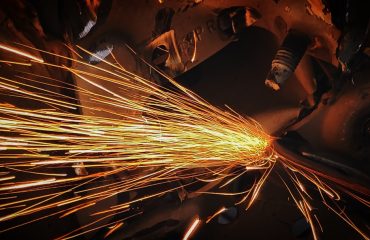In today’s rapidly evolving business landscape, the ability to adapt and improve continuously is no longer a competitive advantage – it’s a necessity. A culture of continuous improvement, often referred to as Kaizen, is the key to unlocking sustained growth, increased efficiency, and enhanced employee engagement. But fostering such a culture requires a deliberate and strategic approach. This post will delve into the essential elements needed to create a truly thriving continuous improvement environment.
1. Laying the Foundation: Establishing a Mindset of Continuous Improvement
The first step towards a successful continuous improvement culture is establishing a mindset shift within the entire organization. This means moving away from a culture of complacency and accepting the status quo, towards one that actively seeks out opportunities for improvement. This requires leadership buy-in at all levels. Leaders must model the desired behavior, actively participate in improvement initiatives, and openly celebrate successes, no matter how small. Furthermore, open communication channels are crucial. Employees need to feel safe and empowered to identify problems, suggest solutions, and voice concerns without fear of retribution. Regular training and workshops on continuous improvement methodologies, like Lean and Six Sigma, can further reinforce this mindset.
2. Empowering Employees: Fostering Ownership and Accountability
A truly effective continuous improvement culture empowers employees at all levels to take ownership of their work and contribute to the improvement process. This requires delegating authority, providing employees with the resources and training they need, and encouraging them to take initiative. Implementing suggestion schemes, where employees can submit ideas for improvement, is a powerful tool. These suggestions should be reviewed, discussed, and implemented where feasible, with feedback provided to the employee. Creating cross-functional teams that collaborate on improvement projects can also foster a sense of shared responsibility and ownership. Regular feedback and recognition for contributions, both big and small, are essential for maintaining motivation and engagement.
3. Measuring Progress: Implementing Data-Driven Improvement Strategies
Continuous improvement is not about making changes blindly; it’s about making data-driven decisions. Implementing key performance indicators (KPIs) and regularly monitoring progress is crucial for tracking the effectiveness of improvement initiatives. This data should be transparent and accessible to all employees, allowing them to see the impact of their contributions and identify areas needing further attention. Using data visualization tools can make this information more readily digestible and engaging. Regular reviews of KPIs should be incorporated into team meetings and company-wide updates, ensuring that everyone is aware of the progress being made and any challenges encountered.
4. Embracing Failure as a Learning Opportunity: Fostering a Culture of Experimentation
A key component of a thriving continuous improvement culture is the ability to learn from failures. Instead of viewing mistakes as setbacks, they should be seen as valuable learning opportunities. Creating a psychologically safe environment where employees feel comfortable taking calculated risks and experimenting with new approaches is essential. Post-mortems, where teams analyze what went wrong and what could be done differently, are a valuable tool for learning from failures. It’s important to focus on the process and the lessons learned, rather than assigning blame. This culture of experimentation encourages innovation and helps the organization adapt more quickly to change.
5. Sustaining Momentum: Building Continuous Improvement into Daily Operations
Building a continuous improvement culture is not a one-time project; it’s an ongoing process that requires consistent effort and commitment. To sustain momentum, continuous improvement should be integrated into daily operations. This can be achieved through regular meetings dedicated to reviewing progress, identifying new areas for improvement, and sharing best practices. Regular training and development opportunities should be provided to employees to keep them updated on new methodologies and tools. Celebrating successes, both big and small, is crucial for maintaining motivation and engagement. Finally, regular audits and assessments can help identify areas where improvements are still needed and ensure that the culture of continuous improvement remains strong.
By implementing these strategies, organizations can cultivate a thriving continuous improvement culture that drives innovation, enhances efficiency, and fosters a more engaged and empowered workforce. The journey may not always be easy, but the rewards – sustained growth, increased profitability, and a more fulfilling work environment – are well worth the effort.
SEO Tags:
- Continuous Improvement
- Kaizen
- Lean Methodology
- Six Sigma
- Organizational Culture




